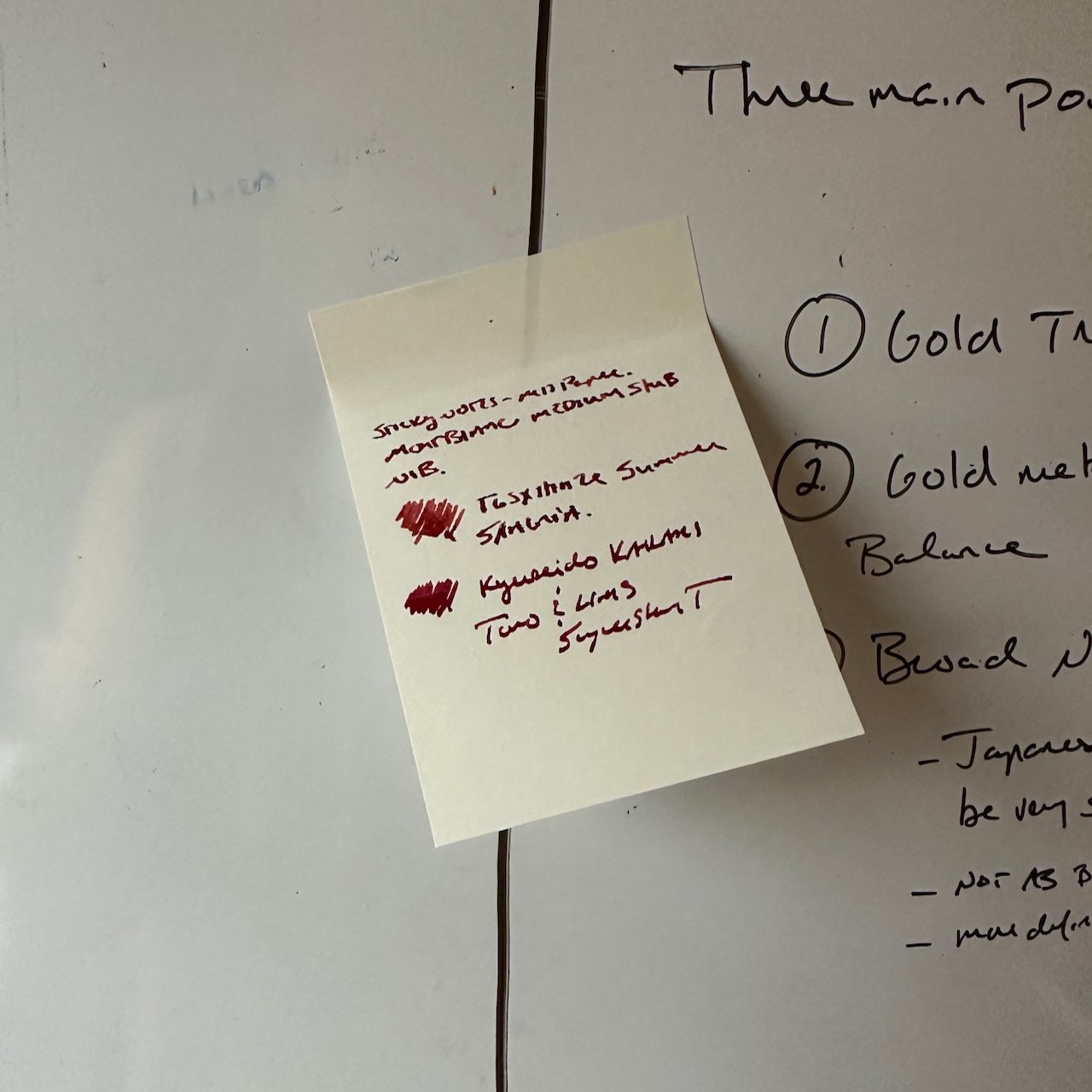I went shopping in my own store yesterday - I know, typically a bad business decision - but since I’ve moved TGS out of my home office to its own commercial space I’ve had to rebuild my home office a bit to make it more suitable for it’s original purpose: reading, home-based projects, and personal writing. Yesterday morning I sat down to plan out my personal finances and errands for the week and realized that I didn’t have any decent sticky notes or even a tear-off notepad at my desk. This presented the perfect opportunity to test out two very popular items from our shop: the Midori MD Memo Block Notepad and the MD A7 Sticky Notepad, which I’d not used extensively myself.
The 500-sheet block notepad contains excellent paper. The thick 4"x4" pad is large enough to rest your hand on while writing on the top half of the sticky note, but most people will likely tear off the sheet to comfortably use the entire page.
Of these two products, the MD Memo Block Notepad is my favorite. I enjoy having a ready supply of tear-off paper that’s not too expensive, and I basically use these as scratch sheets. This large notepad contains 500 sheets of Midori MD Paper (the same as in the standard MD Notebooks), which measure 4” x 4” square and handle fountain pen ink extremely well. I’ve noticed no difference in performance between this notepad and any standard Midori MD paper product. The pad itself is glue-bound along the top edge and does not feature any “sticky” backing on the sheets themselves - these aren’t sticky notes, and if you want to attach the notes to anything, you’ll have to use glue, tape, staples, or a clip. You can also do as I sometimes do, and punch three holes in smaller sheets of paper and stick them in an A5 or Bible-sized Plotter.
One ink (TGS x Hinze Summer Sangria) feathered a little on the sticky note but not on the memo pad. It was worse at the top of the sticky note (where the adhesive likely mixed with the paper).
The Midori MD A7 Sticky Notepad is also a good product, especially when you consider that fountain pen friendly sticky notes are extremely difficult to find. While these are labeled “MD Paper”, this particular product feels slightly different than the Midori MD pads and notebooks. The paper is thinner, and doesn’t handle ink quite as well as the Memo Block, though it still performs nicely for a sticky note. Sticky notes are difficult to use with fountain pens for a couple of reasons. First of all, the paper can’t be too heavy, or else the adhesive won’t be able to support the weight of the note. Second, sticky note adhesive has a tendency to affect how ink behaves on the paper. If you’ve ever written on the top part of a sticky note and had it feather like crazy, only to have the bottom half behave differently, you know exactly what I’m talking about. While I’ve experienced a bit of feathering on these sticky notes with certain inks, they’re generally quite good (certainly better than other alternatives I’ve tried) and on par with the apparently discontinued Traveler’s Company sticky notes.
The adhesive on these notes performs well. I had no trouble sticking it to a whiteboard, and these adhere just fine to notebooks and other sheets of paper - which is how I generally use stickies.
The Midori MD Sticky Notes (left) and MD Memo Block Paper. The sticky notes had a touch of pinpoint bleedthrough, but then again, who writes on the back of a sticky note?
Takeaways and Where to Buy
As always, Midori comes through with a high quality and generally fountain pen friendly product. While the paper in the MD Memo Block notepad performed better than the paper in the sticky notes, I suspect that’s due mostly to the adhesive on the back of the sticky note paper reacting to a very wet fountain pen ink. In any event, I don’t really demand top-notch performance from sticky notes, and these certainly fall into the “good enough and better than nearly everything else I’ve tried” category. The sticky notes will go into one of my Sinclair pen cases so that I have them available wherever I happen to be working, and the MD Memo Block will stay on my desk at home.
We’ve carried these in the shop for a long time - I’ve just never gotten around to using them seriously until this week. The MD Memo Block comes in three formats (grid, blank, and lined) and is priced at $12 for a 500-sheet pad. The A7 Sticky Note Memo pads run $11.50 each and come in five different formats (lined, blank, grid, dot, and framed). You can check out these and other Midori products by visiting the paper section of our store. Also, if you’re aware of any other fountain pen friendly sticky notes out there, let me know as this is a product category I’m interested in!
The Gentleman Stationer is supported by purchases from the T.G.S. Curated Shop and pledges via the T.G.S. Patreon Program.

